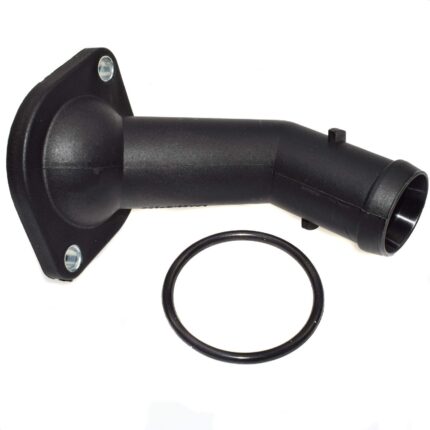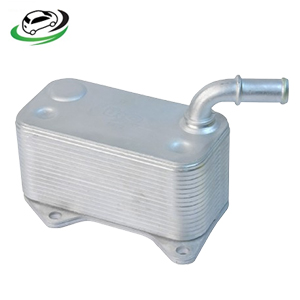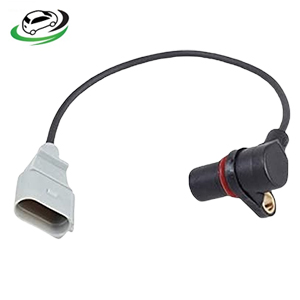-11%
Get Crankshaft Position Sensor AUDI A3 8P/B7 A4/TT MKI/TT MKII/TTS / VW 337/20AE/EOS/Golf IV/Jetta IV/Jetta IV GLI/Passat B6/New Beetle 06A906433L
The crankshaft position sensor is a crucial component in modern internal combustion engines, providing vital information for engine management and performance. This guide delves into the function, construction, types, symptoms of issues, diagnosis, and replacement of the crankshaft position sensor.
What is a Crankshaft Position Sensor?
The crankshaft position sensor (CKP sensor) is an electronic device that monitors the position and rotational speed of the crankshaft in an engine. It provides critical data to the engine control unit (ECU) to optimize engine performance, fuel injection timing, and ignition timing. By accurately measuring the crankshaft’s position, the sensor helps ensure that the engine runs efficiently and smoothly.
Functions of the Crankshaft Position Sensor
The crankshaft position sensor performs several essential functions in the engine:
- Monitoring Crankshaft Position: The primary function of the CKP sensor is to monitor the position of the crankshaft. It detects the crankshaft’s angular position and provides this information to the ECU.
- Providing RPM Data: The CKP sensor measures the rotational speed of the crankshaft, which is used by the ECU to calculate engine RPM (revolutions per minute). This data is crucial for engine management and performance.
- Optimizing Fuel Injection Timing: By providing accurate crankshaft position data, the CKP sensor helps the ECU determine the optimal timing for fuel injection. Proper fuel injection timing improves engine efficiency and reduces emissions.
- Controlling Ignition Timing: The CKP sensor also aids in controlling ignition timing by providing information about the crankshaft’s position. Accurate ignition timing ensures that the air-fuel mixture ignites at the right moment, enhancing engine performance.
- Detecting Engine Misfire: In some engines, the CKP sensor can detect engine misfires by analyzing changes in the crankshaft’s rotation. This information can trigger the ECU to adjust engine parameters or activate diagnostic systems.
Construction of the Crankshaft Position Sensor
The crankshaft position sensor is typically constructed from several key components:
- Sensor Body: The sensor body houses the internal electronics and is usually made from durable materials like plastic or metal. It is designed to withstand the harsh conditions of the engine environment.
- Magnetic or Hall Effect Sensor: The CKP sensor uses either a magnetic or Hall Effect principle to detect the crankshaft’s position. Magnetic sensors generate a voltage signal based on changes in the magnetic field, while Hall Effect sensors use a magnetic field to produce a voltage signal.
- Rotor or Reluctor Wheel: The rotor or reluctor wheel is attached to the crankshaft and has teeth or slots that create varying magnetic fields as the crankshaft rotates. The sensor detects these changes and generates a signal.
- Electrical Connector: The electrical connector is used to connect the CKP sensor to the vehicle’s wiring harness. It provides the necessary power to the sensor and transmits the sensor’s signal to the ECU.
- Mounting Bracket: The sensor is mounted to the engine block or timing cover using a mounting bracket or bolts. The bracket ensures that the sensor is positioned correctly relative to the crankshaft.
Types of Crankshaft Position Sensors
Crankshaft position sensors come in different types based on their operating principles:
- Magnetic Sensors: Magnetic crankshaft position sensors use a magnetic field to generate a voltage signal. As the rotor or reluctor wheel’s teeth pass by the sensor, they create changes in the magnetic field, which are detected by the sensor and converted into a signal.
- Hall Effect Sensors: Hall Effect crankshaft position sensors use the Hall Effect principle to detect changes in a magnetic field. As the rotor or reluctor wheel rotates, it creates variations in the magnetic field that are detected by the sensor, producing a voltage signal.
- Optical Sensors: Optical crankshaft position sensors use light beams and optical sensors to detect the crankshaft’s position. They are less common but are used in some engine designs.
- Variable Reluctance Sensors: Variable reluctance sensors are similar to magnetic sensors but use a variable reluctance principle to detect changes in the magnetic field. They are often used in older engines.
Symptoms of Issues with the Crankshaft Position Sensor
Problems with the crankshaft position sensor can lead to various symptoms affecting engine performance and drivability. Common symptoms include:
- Engine Misfire: A faulty CKP sensor can cause engine misfires, leading to rough idling, hesitation, or loss of power. The sensor’s inability to accurately measure crankshaft position can disrupt ignition and fuel injection timing.
- Hard Starting or No Start: If the CKP sensor fails, the engine may experience difficulty starting or fail to start altogether. The ECU relies on the sensor’s data to initiate the engine’s ignition process.
- Stalling: A malfunctioning CKP sensor can cause the engine to stall while driving. This occurs because the sensor’s failure disrupts the ECU’s ability to manage engine parameters effectively.
- Check Engine Light: The check engine light may illuminate if the CKP sensor is faulty or if there is a problem with its signal. Diagnostic trouble codes (DTCs) related to the CKP sensor can be retrieved using an OBD-II scanner.
- Erratic Engine Performance: Issues with the CKP sensor can lead to erratic engine performance, including fluctuating RPMs, poor acceleration, or reduced fuel efficiency.
Diagnosing Issues with the Crankshaft Position Sensor
Diagnosing issues with the crankshaft position sensor involves several steps:
- Visual Inspection: Perform a visual inspection of the CKP sensor and its wiring. Check for signs of physical damage, corrosion, or loose connections.
- Check Sensor Voltage: Use a multimeter to measure the voltage output of the CKP sensor. Compare the readings to the manufacturer’s specifications to determine if the sensor is functioning correctly.
- Test Signal Waveform: Use an oscilloscope to analyze the waveform of the CKP sensor’s signal. The waveform should be consistent with the expected pattern for the sensor type.
- Check for Error Codes: Use an OBD-II scanner to retrieve any diagnostic trouble codes (DTCs) related to the CKP sensor. The codes can provide information about the nature of the problem.
- Inspect Reluctor Wheel: Inspect the rotor or reluctor wheel for damage or misalignment. Ensure that the sensor is correctly aligned with the rotor and that there is no debris interfering with the sensor’s operation.
Replacing the Crankshaft Position Sensor
If a problem with the CKP sensor is identified, replacing it is necessary to restore proper engine function. The replacement process typically involves the following steps:
- Prepare the Vehicle: Ensure the engine is cool before starting the replacement process. Disconnect the battery to prevent electrical issues.
- Locate the Sensor: Locate the crankshaft position sensor on the engine block or timing cover. The sensor is usually positioned near the crankshaft or the timing belt/chain.
- Remove the Old Sensor: Disconnect the electrical connector from the CKP sensor. Remove any mounting bolts or fasteners securing the sensor to the engine. Carefully extract the old sensor from its mounting location.
- Install the New Sensor: Position the new CKP sensor in the mounting location, ensuring proper alignment with the rotor or reluctor wheel. Secure the sensor with the appropriate bolts or fasteners.
- Reconnect Electrical Connector: Reconnect the electrical connector to the new sensor. Ensure that the connection is secure and free from corrosion.
- Check Operation: Reconnect the battery and start the engine. Monitor engine performance and check for any error codes or warning lights. Ensure that the new sensor is functioning correctly and that the engine operates smoothly.
Choosing the Right Crankshaft Position Sensor
When selecting a replacement CKP sensor, consider the following factors:
- OEM vs. Aftermarket: OEM (Original Equipment Manufacturer) CKP sensors are designed to meet the exact specifications of your vehicle and provide reliable performance. Aftermarket sensors can vary in quality, so choose a reputable brand if opting for an aftermarket part.
- Compatibility: Ensure that the CKP sensor is compatible with your vehicle’s make, model, and engine configuration. Verify the part number and specifications before making a purchase.
- Material and Design: Choose a CKP sensor made from durable materials that can withstand the engine’s operating conditions. Consider the design of the sensor, including its mounting and connector features, to ensure proper fit and function.
Follow us on Facebook for more parts.



